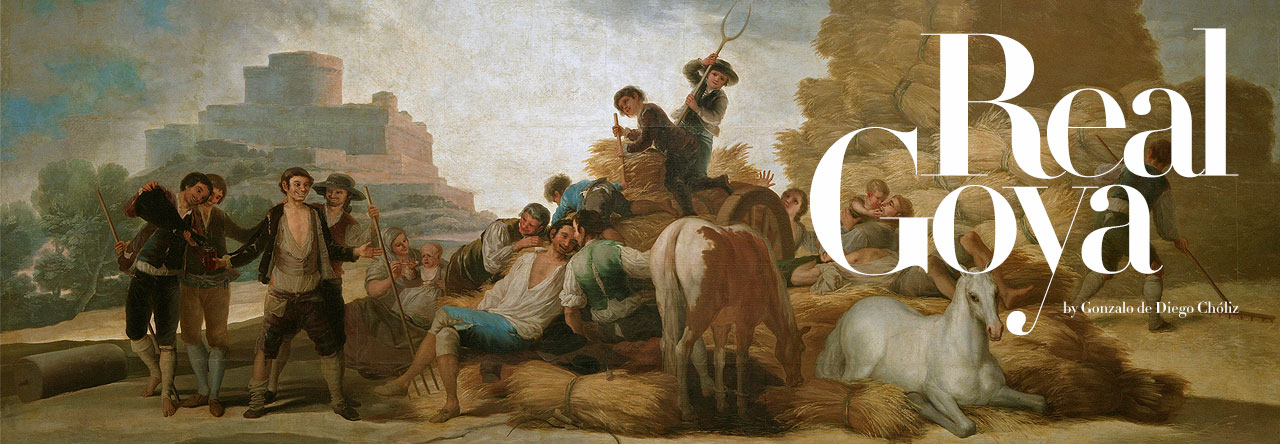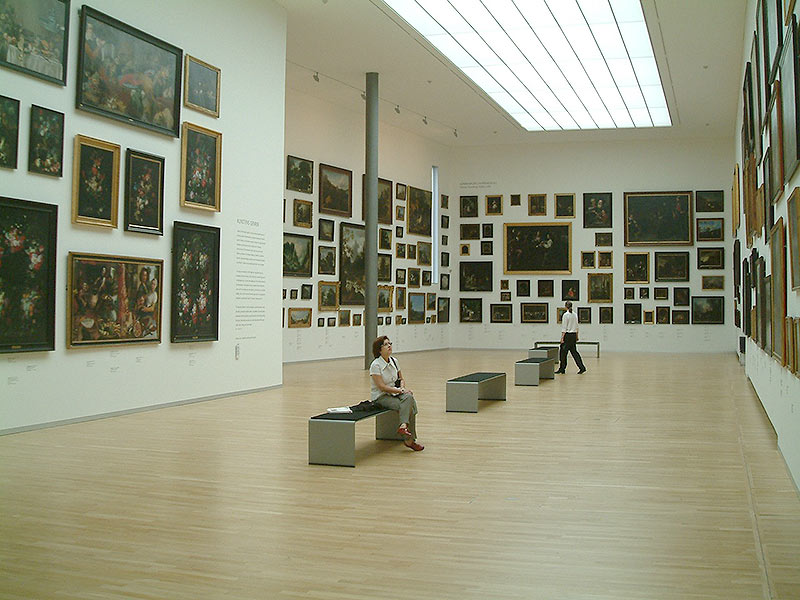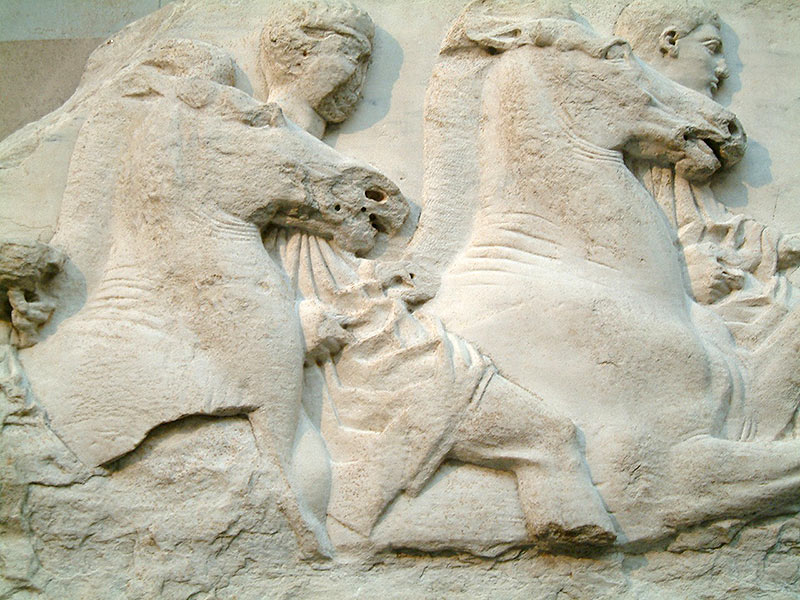In 1972, Unesco adopted the Convention on the Protection of the World Cultural and Natural Heritage. After the unification of criteria in 2005, there is a group of ten criteria (6 for cultural and 4 for natural resources) and in order to be included as a world heritage, a site or a good must have outstanding universal value and meet at least one of the ten criteria of selection.
The first point, “Perform a play masterpiece of human creative genius“, it seems perfectly applicable to works of art of exceptional character, since the art bears witness to cultural movements. Also and at least the third and sixth points are likely to be applied to the original works of art having designated important traits and that society has given a character of duration and continuity. And something very worth to be highlighted: each world heritage site belongs to the country in which it is located, but is considered in the interest of the international community and it must be preserved for future generations. That applied to works of art undoubtedly concerns the ownership of the good, the owner thereof within the broad set of international society.
As a result, and as like that from the material point of view a work of art also has a transient and changeable character, an ephemeral quality, will be essential and required that owners and depositors of those goods -works of art in this case- such as museums, foundations and cultural institutions, societies and private collectors are considered physically and morally compromised directly with better conservation and protection of these assets aside from issues in this context can be considered minor, such as cataloging or attribution.
National Gallery of Denmark. Copenhague
It is or is not heritage a Goya? And a Rembrandt, or a Velazquez? It is not the Pergamon Altar? The Altamira Caves? In my opinion of course they are! Hence the enormous responsibility of their owners to keep them well care, well protected, well presented. Do not even say, in its case, when it comes to transport and display them.
The era of the great international exhibitions ended with the start of the latest international financial crisis or, rather, when it erupted in the USA and spread all over the world. Those large exhibitions that were crossing seas and oceans by plane with the enormous risk for general integrity and inheritance. Those insurance policies, in correspondence, dizzying figures only acceptable thank to guarantees from the States themselves. Those excessive risks, despite the accompaniment by couriers and specialists both in travel and in impeccable packed, unpacked and final placement of pieces, lighting, humidity and general security monitoring… Everything came into an impasse that someday is supposed to leave and will resume -sure that with other provisions and doubled surveillance- what will mean that the crisis has been overcome, let’s say so, and may be dreaming of such a kind of mass cultural events.
But there is no pause or rest for the preservation, maintenance or for all the care, as nor will the degree of ethical responsibility be changed one inch down, but quite the opposite. Responsibility for the care and supervision of goods classified as common heritage will remain in the most high and sophisticated. Because the most important thing in this matter and on what is restless of insisting there is care, i.e. the conservation of good and its assurance. Much more than their classification, cataloging or inventoried, that never cease to be exceedingly variables. And those functions are sinking into solvents and experienced hands.
In the friese of the Parthenon of Athens. British Museum. London
Perhaps the British Museum will not remain the common house, the conservatory or abode of the Athenian Parthenon, or the Rosetta stone or so many and so many treasures of mankind? Or the Museum Pergamon of Berlin for the Pergamon Altar? Since nothing will have changed, or is changing, no second row character must have access to direct this kind of issues in that Museum. Any irrelevant character, without proven category, may or must have access to decisions of such importance. Due to a pure moral temperature, anyone who confuses the priorities or that, born of their own selfishness, seeking to grab a few goods that are the heritage of humanity.
The same, corrected and, if fit, increased, we can say for the National Gallery of Washington when considering from their Giotto to the last supper of Dalí, passing by Memling, Leonardo, Raphael, Velázquez, Goya (Marquesa de Pontejos), Rembrandt, Picasso and Matisse. Or for the Egyptian art at the Metropolitan in New York. Would it go through the head of someone, in Basel, do not care minimally its David Gerard, Holbein, Cezanne, Braque, Gris, Klee or Alberto Giacometti? Surely not. And thus for Mantegna, either be in the Museum or collection which may be, or to the Goya’s of the Museum of São Paulo, as the portrait of Don Luis de Borbón, the Marchioness of Casatorres or the superb portrait of Don Juan Antonio Llorente. And hundreds of museums and collections, masterpieces of art throughout the world, as they can be those of primitive art at the Musée du quai Branly in Paris, or the conservation and exhibition of art in the National Gallery of Washington and, of course, the Louvre Museum, the painting of Velazquez, the Flemish, and of Goya in the Museum of Prado. Perhaps one of these venues of artistic privilege do not improve their facilities, their safety, their forecast every day, even in times of crisis? As it could not be less, they are limited to keep the legacy received in the best possible way.
So we speak of evolution for the concept store and its social responsibility. The examples are many and well known, and safeguards, precautions and deserved respect for these goods transcend mere ownership or possession of the property, to achieve a very high degree of responsibility for their custody and maintenance. This is an issue vital and proportionally greater in countries such as Spain, France or Italy, holders of unique collections. And in this regard seems mandatory enforceable to update what matters on maintenance and safety. Because of this are worth to point out the initiatives that serve as reference, like what just take the Mapfre Foundation in Madrid, which in several languages has published on its website a Guide of Conservation, Manipulation and Exhibition for collections of contemporary art on paper, written by Jorge García Gómez-Tejedor and Pilar Montero Vilar, and that is perfectly extensible to all sorts of papers and prints of other times, if we take into account also issues to its technical components, possible alterations and different treatments for restoration and, similarly, the corresponding to the paintings and sculptures. In the guide are described the conditions for archive rooms and planning, environmental conditions, containers and storage, social conditions and the corresponding inspections. A key and essential work. Realgoya wants to congrats from here to the Mapfre Foundation since this exemplary publication constitutes in itself a professional mandatory guide that as an effective example should follow to the letter all the collections deemed worthy of the name.
Finally, and in this same context we may conclude also that the knowledge of pictorial, sculptural or drawing techniques, but also the fundamental problems of conservation and restoration, they are indispensable when they propose and study specific interventions recommended by the scientists, technicians and the curators in the museums and major collections. Because such activities also contribute to its mission of service to the society as the Museum, crossroads of art and history, test every day, living and dynamic way, that the past illuminates the present and, as says the Ecclesiastes I, 9., “What has been, what will be, what has been done and what will be done; and that there is nothing new under the Sun.”
Gonzalo de Diego


